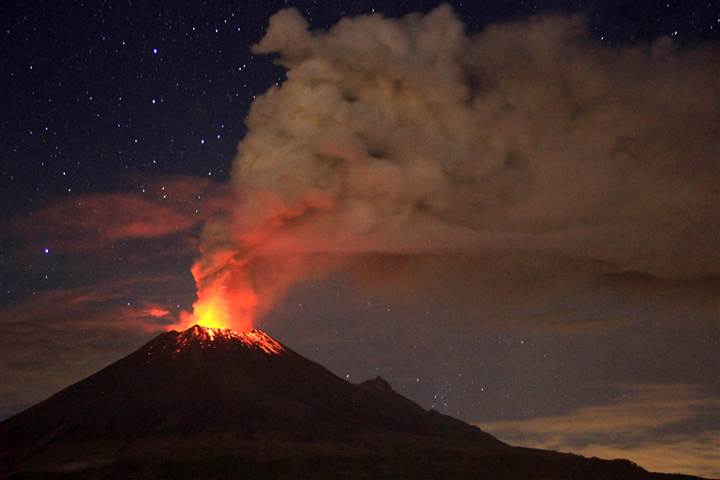
There are a number of things that could trigger an extinction event and effectively bring an end to human civilization. We often talk about asteroids and comets and how they could spell our doom. But great destructive forces don’t just exist out in the inky darkness of space. The Earth itself is host to a vast array of destructive forces—hurricanes, earthquakes, and tsunamis are all capable of causing serious devastation. Today, I wanted to take a look at one of these forces: Volcanoes.
Your typical volcano, Etna, Fuji, St Helens, and so on, can cause massive devastation. Any of these could wipe out vast swathes of forest, destroy human settlements, pollute the water-ways, create acid rain, temporarily alter the weather systems, and exterminate life via lava, smoke, and various forms of projectiles.
The projectiles from volcanoes are most often referred to as “pyroclastic flows” (or pyroclastic ash and tuff). This is basically a cloud of superheated volcanic dust and rock that surges like an avalanche down the side of a volcano engulfing all in its path. It suffocates living things (creatures and vegetation) and can also incinerate them in seconds. Lava itself is extremely hot. Although the temperature varies depending on composition, it can reach temperatures exceeding 1250 degrees Celsius(2282º F). There can also be larger pyroclastic boulders during a particularly explosive eruption, but these are often associated with cataclysmic eruptions that destroy the volcano cone.
Now, let’s take all that I’ve just told you and multiply it by hundreds of thousands. We’re talking Supervolcanoes here.
Our planet, that which spawned us, could easily wipe us out in one supervolcanic eruption, and we could do absolutely nothing to stop it. The typical super-eruption is believed to release the force of 1,000 Hiroshima atomic bombs EVERY SECOND.
So, what would this look like? First, any combustion engine would be destroyed by the world-encompassing ash cloud. Each breath you make would fill your lungs with thick heavy pyroclastic ash, suffocating you whilst the ash reacted with the moisture in your lungs and began to erode the lining of your alveoli.
The planet’s atmosphere would be so thick with greenhouse gases that the meteorological systems of Earth would be thrown into disarray. We could well find ourselves thrust into a new ice age. That is, if we survived the initial effects. The sun would be nothing more than a dull and hazy blur on the clearest of days (that’s assuming it was safe enough for you could venture outside to look at it, which it probably wouldn’t be).
Fortunately, volcanologists assert that super-volcanic eruptions only occur once every 100,000 years or so. However, the last one was approximately 77,000 years ago, to the best of our knowledge. So it is believed that we are owed a super-eruption. That said, it is unlikely that one will erupt tomorrow, as there will be warning signs.
As to where the next eruption may occur, it has been speculated that Yellowstone Park, USA, is long overdue unleashing its fury. However, there is little evidence to suggest it would be a super-eruption. Rather, scientists speculate that it was most likely be a standard eruption, just enough to let off some internal pressure.
Geologists monitoring Yellowstone have noted a few signs of build up; a portion of the crater has elevated by nearly 7cm over a 2 year period (2004-2006) and extra springs and geysers have emerged. These are the signs of increased internal pressure underneath – filling up of a several mile wide magma chamber.
Geological evidence suggested that when a super-eruption last occurred with humanity on the planet, it had near-extinction results. Toba erupted around 69,000 – 77,000 years ago and wiped humanity down to a purported 3,000–10,000 surviving individuals. That’s it. 10,000 people. That’s all that was left.
The after-effects shunted the planet into a 10 year volcanic ice-age, and cooled the planet dramatically there-after for 1,000 years.